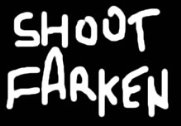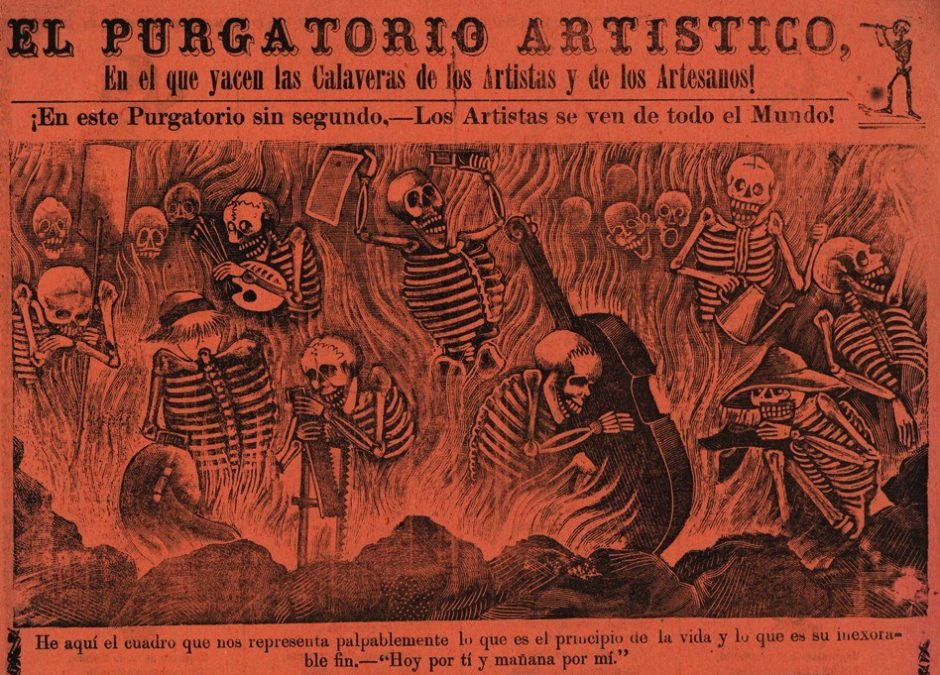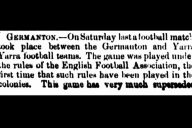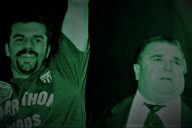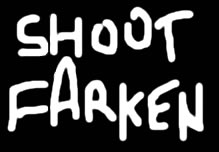On May Day 2016, Adelaide United finally came of age. Since its formation in 2003, the Reds had promised much, yet delivered little in the tangible form of silverware. The 3-1 success over the Western Sydney Wanderers at Adelaide Oval capped off an unprecedented A-League season in which the Reds rose from last place on the table in Round 8 to claim both the Premier’s Plate and, at long last, the Champion’s Golden Toilet Seat. This win served not only to ease the painful memories of the two Grand Final defeats to bitter rivals Melbourne Victory in 2007 and 2009, but also to finally legitimise the club in the eyes of the South Australian sporting community. Adelaide United were Pissants no more; the history of choking behind them, buried by a wonderfully balanced team coached by Barcelona legend Guillermo Amor.
Or so we thought.
After 12 rounds of the current season, the double winners find themselves once again rooted to the bottom of the A-League table, with their only win coming against a desperately out-of-sorts Wellington Phoenix. The Phoenix immediately parted company with coach Ernie Merrick after the defeat.
While some of the performances have been acceptable, if somewhat inconsistent, the results have not been. There has been some bad luck for the Reds – injuries, refereeing decisions and the frame of the goal have all cost Adelaide points. But such a terrible start cannot be dismissed as purely the result of misfortune. This time, it seems, there will be no miracle comeback. Not in the form of a Premier’s Plate, at the very least. The ‘Premiership hangover’ has become a crisis, with the club’s title defense – much like its on-field defence – left in tatters.
Fans and pundits alike are asking themselves: ‘where has it all gone wrong for the Reds?’
Maybe rival fans buried a black cat at Hindmarsh in the off-season and the slump will be reversed upon the removal of the cursed feline. If only it was so simple.
Departure Lounge
As I warned the club and its fans in my previous piece for Shoot Farken, no team in the A-League’s short history has retained the Premier’s Plate, and only Ange Postecoglou’s all-conquering Brisbane Roar have kept hold of the Championship. In the A-League, success is often fleeting.
Indeed, Adelaide would not be the first A-League team to follow up success with a sharp decline. The double winning Melbourne Victory team of 2006-07 failed to qualify for the finals the following season. So too did Sydney FC after winning the double in 2009-10.
The Newcastle Jets team who succeeded the Victory as Champions in 2007-08 went on a year later to finish bottom of the league, earning just 4 wins and 18 points from 21 games. So Adelaide’s descent into the A-League cellar is certainly not without precedent.
The loss of a number of key players from the title winning squad has become something of a crutch in terms of excuses, but it is a valid one nonetheless. Gone are wingers Bruce Kamau and Craig Goodwin, midfield machine Stefan Mauk, striker Bruce Djite and utility forward Pablo Sanchez, all of whom played a crucial role in the club lifting both A-League trophies last season.
Djite’s departure in late July in particular seems to have hurt the club’s rebuilding plans, with an overseas marquee winger initially targeted before the eventual recruitment of Spanish striker Sergi Guardiola. It also highlights how under-appreciated Bruce Djite’s role in the team was to many Adelaide United fans, who continually begged the club to sign another striker while Djite worked tirelessly (and, for some time, goal-lessly) to link the team’s midfield and attack into a cohesive unit.
There is also something of a similarity with that wooden spoon-winning Newcastle team in terms of the loss of key players. The Jets lost Stuart Musalik and Mark Bridge to Sydney FC, and Andrew Durante to Wellington. They failed to immediately replace them with quality recruits, and paid the price.
“Spend some fucking money!”
Adelaide United’s current hierarchy have made it known that they are committed to ensuring the club’s financial stability. They will not overspend in order to compete with the likes of Sydney and Victory over a player, for example. This has led to claims by some fans that Adelaide United are ripping off its supporters by underspending on the field. The discontent has been louder this season, given the club’s lack of on-field success and the inconsistent performances of some of the new signings.
This accusation, according to club CEO Grant Mayer at least, is unfounded. Mayer has publicly stated that the Reds are actually spending more on players than they did for the title winning season. And that is with 3 senior squad spots still available to be filled.
The club has certainly not recruited poorly credentialled players. Sergi Guardiola is on loan from La Liga side Granada CF, having previously signed for Barcelona’s reserve team. James Holland has 15 Socceroos caps, having plied his trade in Europe since leaving the Jets in January 2009. Henrique is a beloved cult hero at the Roar for a good reason. Ben Garuccio could be seen as a like-for-like replacement for Craig Goodwin, while Ryan Kitto impressed at the Jets after winning the Sergio Melta Medal as the best player in South Australia’s NPL in 2015. Throw talented South Australian youngsters Nikola Mileusnic, Riley McGree, Jordan O’Doherty and Marc Marino (along with, all too briefly, Danny Choi) into the mix and it’s hard to argue that the Reds have failed to bring some quality into the squad.
The issue clearly is not that the Reds haven’t spent any money. Perhaps it is that they took too long to bring new players into the squad, and furthermore that some of these players were not the right fit for the team’s established structure.
A failure to communicate
Following Adelaide’s embarrassing FFA Cup exit at the hands of unheralded Redlands United, Paul Marcuccitti for Indaily speculated that the Reds had left their recruiting for their title defence too late. Marcuccitti believed that the late push for additions meant that, in turn, there would be less time to integrate them into the squad. So far, the Reds have proved him correct with some disjointed showings.
Injuries certainly have not helped either, with Carrusca and Cirio becoming early casualties – at a time when they needed to be forming an understanding with some of their new teammates, in particular Guardiola.
Instead, the burden fell on a front four made up of new arrivals to gel quickly in order to provide attacking impetus for Amor’s team. With such limited time in which to work, and with some of these players being relatively inexperienced, it should not be a surprise that Adelaide haven’t exactly made waves in front of goal.
United have indeed scored the least goals of any team, and only the Mariners have hit the target less than the Reds. Guardiola regularly looks isolated when leading the line, and sometimes is totally out of sync with his teammates. It certainly is not easy to integrate into a team when you are flanked by new players seemingly every week.
While bad luck has played a part, the Reds may well have been a more cohesive unit had they completed their squad more promptly. This perhaps answers why the attack has been so poor, but what of the defence?
Square pegs, round holes?
Last season Adelaide’s defence became imperious after overcoming their poor start to the campaign. From Round 9 to Round 27, when the Reds lost just once, they only conceded 11 goals in 19 games. In the 12 games so far this season Adelaide have leaked 23 goals, keeping two clean sheets.
Many of these goals have been ‘soft’ ones, which perhaps explains why 46 per cent of the shots on target Galekovic has faced this season have gone past him (across the league, 33.5 per cent of shots on target have resulted in goals at the time of writing).
It’s clear that United’s defensive efforts have been well below those of seen last season. This is harder to explain than for the attack’s poor showing, given that – aside from the injured Michael Marrone – Adelaide’s defensive unit remains the same as it was for the previous campaign. Nonetheless, in Marrone’s absence, Elrich has shifted to right back after predominantly being deployed as a left back last season, while the attack-minded Garuccio has become the team’s new left back.
There have been noticable gaps left in defence which have resulted in some of those easy goals for the opposition; perhaps this small reshuffle has played some role. It will be interesting to see what impact Marrone’s return to the line-up (and Garuccio’s move into the forward line) might have.
Ahead of the back four, Isaias has in recent weeks been moved forward into a number 8 role to accommodate James Holland in the number 6 position, held by Isaias for the last three seasons. The Roar’s resident tactician, Tim Palmer, saw this as a positive move on Amor’s part:
“This has two key effects. Firstly it gets Holland – a creative long-range passer – on the ball more frequently, and secondly, as Isaias tends to drift back towards his deeper role when Adelaide have possession, it draws opposition midfielders further up the pitch, thus creating more space for Carrusca to play like an out-and-out number ten between the lines.”
However, the execution has been less than satisfactory. Isaias’ tendency to drop deeper (after all, this has been his role for three seasons) has left a large divide between Adelaide’s front four and the rest of the team. It somewhat resembles the broken system used by John Kosmina in his second stint at the Reds, which was ruthlessly exploited by the league’s more tactically astute coaches and teams.
Adelaide sorely misses having a box-to-box number 8 in the vein of Stefan Mauk, or even James Jeggo. Holland and Isaias are both quality players, but it appears neither is the right man to fill this void in Amor’s system.
Prior to the recent 2-1 defeat to Newcastle, Amor told the Fox Sports interviewer that the team’s defensive structure started with Guardiola and encompassed the whole side. United defend from the front. Therefore he cannot be happy with how poor Adelaide’s pressing has been this season. As Tim Palmer explains:
“…Adelaide’s lack of intensity upon the turnover of possession has been a noticeable issue all season. Their counter-pressing – pressing the opposition to prevent counter-attacks – is non-existent, allowing teams to break forward quickly against the unorganised defence.”
To be successful this season, Adelaide needed its defensive output to be elite. Especially given that the forwards needed time to gel into a cohesive, dangerous unit. Adelaide may not have the right ingredients to be a dominant side currently, but they could have found success in making themselves difficult to beat. Instead, the Reds’ defensive efforts have cost them several points, even when the attack has actually done its job. This is a big reason why Adelaide find themselves rooted to the foot of the table.
Change is coming
Some Reds fans have already written off this season. This is somewhat premature. The Premier’s Plate may already be beyond Adelaide’s grasp, but finals are certainly achievable. It would not be without precedent for United to reach the Grand Final from this position. In 2011-12, Perth rose from 9th place after Round 14 to ultimately face Brisbane Roar in that season’s decider.
On January 4, the transfer window opens and thus the Reds are presented with an opportunity to bolster the squad (which needed to be done anyway with the AFC Champions’ League looming) and address its weaknesses. Both the CEO and the club’s Manager of Football have publicly acknowledged that change is needed. Exactly what form that change will take is not clear, but the transfer window certainly presents the chance for the Reds to alter their fortunes with some shrewd signings.
Amor’s guidance of Adelaide to its first ever Championship has earned him patience from the United fans. Despite things looking grim early last season, Amor kept the faith with his players and his system, and ultimately he was rewarded.
So far this season, however, his faith seems misplaced. The team’s showings in the last three games have been unacceptable, yet it took until Adelaide were 4-0 down against Sydney FC for there to be a palpable response from Amor, when he hauled off Carrusca and La Rocca for Taylor Regan and Kitto.
Whether this points to an overdue line-up change for the Reds’ New Year’s Day encounter in Wellington remains to be seen, but it is clear that change is needed. New signings will not immediately be available for Amor, so in the interim a solution from within must be found. This could take the form of trialling different players within the current system, or Amor may change the structure of the side in order to restore the balance that has been missing this season. Graham Arnold, after all, has had great success so far this season with Sydney FC by playing two number 6s, and emulating his system could be one way to get the most out of Isaias and Holland.
All hope is not lost (yet…)
The Reds are on the canvas. Everything that could have gone wrong has done for Amor’s men. Injuries and refereeing mistakes can’t be escaped. But perhaps the club could have avoided some of the pain it and its fans are now enduring with better, and prompter, recruitment. Now with the transfer window looming, and the measured Amor seemingly close to running out of patience with some of his players, the opportunity to right the ship and salvage something from the season is here.
Change is needed. There can be no doubt about this. However, the Reds hierarchy need to ensure that any changes made are indeed the right moves for the club. With many key players coming off contract at the end of the season (along with Amor himself) – and allegedly on the shopping lists of rival A-League clubs – Adelaide could potentially go from paradise to purgatory in the space of a year.
This needs to be avoided at all costs. As the Jets and Mariners have shown in recent years, once a club bottoms out it is extremely difficult to rebuild from scratch. Especially when the club does not have the financial might of the likes of Sydney FC and the two Melbourne sides.
Living in football limbo is simply not an option for Adelaide. If the club fails to turn its fortunes around via the transfer window, or even from internal improvement, the ramifications could become long-lasting. Just ask the Newcastle Jets, who haven’t made the finals in six years.
The challenge is there. The time has come for the club to once again unite; to pull itself from the depths of despair and back into the top six, where it belongs.
Feature illustration of Musicians in Purgatory by José Guadalupe Posada.
